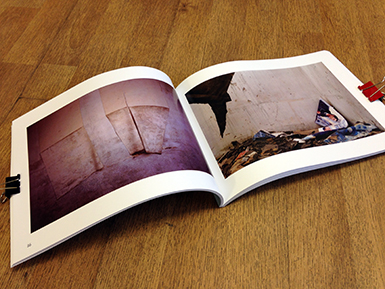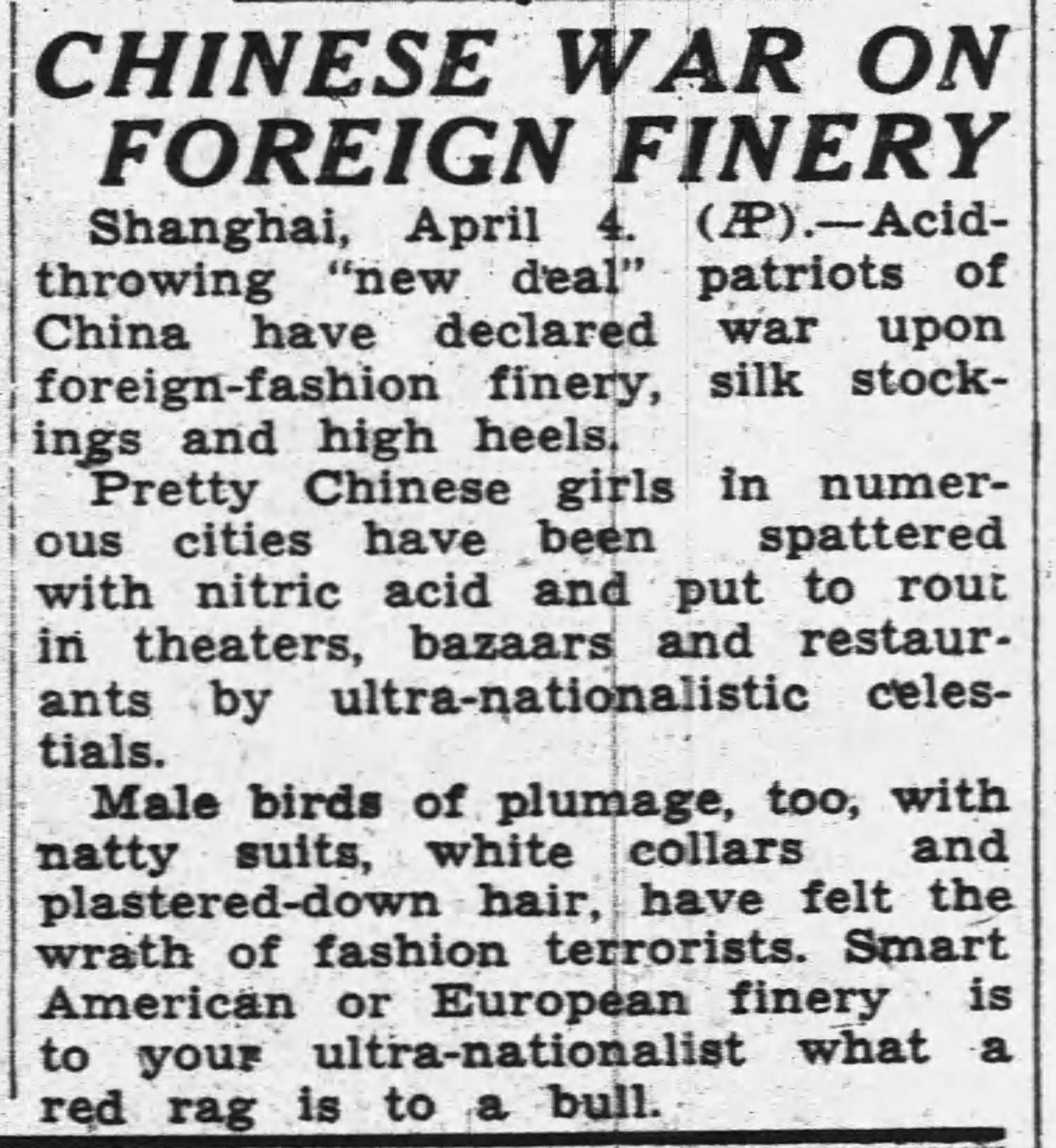Posted: April 5th, 2016 | No Comments »
I posted yesterday regarding Reuters’ offices on Avenue Edward VII (now Yanan Road) – by 1940 The Avenue Eddy and the cluster of newspaper and wire services offices, known as “Newspaper Row”, were a frontline in Shanghai – both as various sides threatened to bomb and snipe at the offices as well as being the border between the Settlement and Frenchtown – as you can see precautions were taken….

Posted: April 4th, 2016 | No Comments »
A letterhead for the Reuters news agency from 1937 Shanghai – headquartered on “Newspaper Row” aka Avenue Edward VII (The “Avenue Eddy” and now Yanan Road East). Especially handy as the traffic offices for cablegrams out of and into Shanghai were at 34 Avenue Edward VII too. However, some tensions may have been apparent as Japan’s Domei news agency was in the same building as was the German Trans-Ocean News Service.

Posted: April 3rd, 2016 | No Comments »
In 1935 American journalist Sam R. Leedom undertook a round the world reporting trip for the Californian newspaper, The Fresno Bee. He stopped off in Macao around March that year and sent back some photos…

Posted: April 2nd, 2016 | No Comments »
The shelf of Taiwan-US relations has got noticeably longer in recent years. Here’s another addition – Hsiao-ting Lin’s Accidental State...

Defeated by Mao Zedong, Chiang Kai-shek’s Nationalists fled to Taiwan to establish a rival state, thereby creating the “Two Chinas” dilemma that vexes international diplomacy to this day. This is the conventional narrative that Hsiao-ting Lin challenges in Accidental State. Drawing on recently declassified archives, he shows that the creation of a Taiwanese state in the early 1950s owed more to serendipity than careful geostrategic planning. It was the cumulative outcome of ad hoc half-measures and imperfect compromises, particularly when it came to the Nationalists’ often contentious relationship with the United States. Taiwan’s political status was fraught from the start. The island had been ceded to Japan after the First Sino-Japanese War, and during World War II the Allies promised Chiang that Taiwan would revert to Chinese rule after Japan’s defeat. But as the Civil War turned against the Nationalists, U.S. policymakers reassessed the wisdom of backing Chiang. Cold War realities and the fear of Taiwan falling into Communist hands led Washington to recalibrate. Yet American support of a Taiwan-based Republic of China remained ambivalent, and Taiwan had to eke out a place for itself in international affairs as a de facto, if not fully sovereign, state.
Posted: April 1st, 2016 | No Comments »
Anne Witchard has a Q&A with James H Bollen on the Los Angeles Review of Books China Blog regarding his new book of photography, Wallpaper: The Shanghai Collection. I’ve written about James’s previous book that dealt with the Shanghai imagery of JG Ballard here. In his new book Bollen juxtaposes images of architectural destruction in Shanghai with quotes from William Morris. The Q&A and some images from the book are here….details of how to get the book are on Bollen’s website here….

Posted: March 31st, 2016 | 1 Comment »
David Leffman’s The Mercenary Mandarin, the life of William Mesny, is all new to me…so thank you Blacksmith Books for publishing….

Jersey-born William Mesny ran off to sea as a boy and jumped ship at Shanghai in 1860 when he was just 18. Amid the chaos of foreign intrigue and civil war in 19th-century China, he became a smuggler, a prisoner of the Taiping rebels, a gun-runner and finally enlisted in the Chinese military.
After five years of fierce campaigning against the Miao in remote Guizhou province, Mesny rose to the rank of general and used this privileged position to travel around China – to the borders with Burma, Tibet and Vietnam – writing opinionated newspaper articles, collecting plants and advising government officials on the development of railways, telegraphs and other modern reforms.
Mesny eventually settled in Shanghai with a 16-year-old concubine and published Mesny’s Chinese Miscellany, a weekly magazine about his experiences. But his story was not to end well. After his implication in an illicit arms deal, his fortunes never recovered, and when he died in 1919 he was working as a desk clerk.
David Leffman has spent over 15 years footstepping Mesny’s travels across China, interviewing locals and piecing together his life story from contemporary journals, private letters and newspaper articles.
Posted: March 31st, 2016 | No Comments »
Some extreme nationalists reacted very angrily to the new, more racey, fashions of 1934 Shanghai. It seems some “patriots” got very annoyed by imported foreign fashions, particularly silk stockings and high heeled shoes. A spate of nasty acid throwings hit the city in April. The problem spread to other cities – a Chinese woman in new foreign clothes a Hankow cinema had nitric acid thrown into her lap in the dark – her assailant escaped. The rather vile craze seems to have passed swiftly but left some women badly scarred.

Posted: March 31st, 2016 | No Comments »
Tuesday, 12th April 2016
7:00 pm – 9:00 pm
Comparing the Architecture of Colonial Rangoon & Concession-era Shanghai
Speaker: Kate Baker & Tess Johnston

Tess Johnston and Kate Baker have traveled together to Yangon on two separate occasions to view the fading glory that was once colonial Rangoon. They will share their descriptions and photographs, both then and now, of some of the most significant colonial architecture in Asia. Places of interest include the legendary Pegu Club, one of the most exclusive clubs in Asia and how it looks today, and the Secretariat, the massive government building in which Britain’s bureaucracy flourished. They will ask the question,  “Can comparisons be made to the colonial architecture in Shanghai?â€
ABOUT THE SPEAKERS
Tess Johnston first came to Shanghai in 1981 to work at the American Consulate General and in 1996, after over thirty years in the diplomatic service, she retired and stayed on to research, write, and lecture. She and her co-author, Shanghai photographer Deke Erh (Er Dongqiang), have published over 25 books, including fifteen volumes on Western architecture and the expatriate experience in old China.
Kate Baker lived in Shanghai for four years and in the Asia region for nearly 20 years. Collaborating with other Shanghai explorers, Kate wrote a guide detailing walks outside of Shanghai as well as the fifth Shanghai Walks book “The Wheres Where of the Who’s Who of Old Shanghaiâ€. Her book entitled, “Jiading: Centuries of History, Decades of Change†was published in 2015. She currently resides in Washington, DC.
More details here







